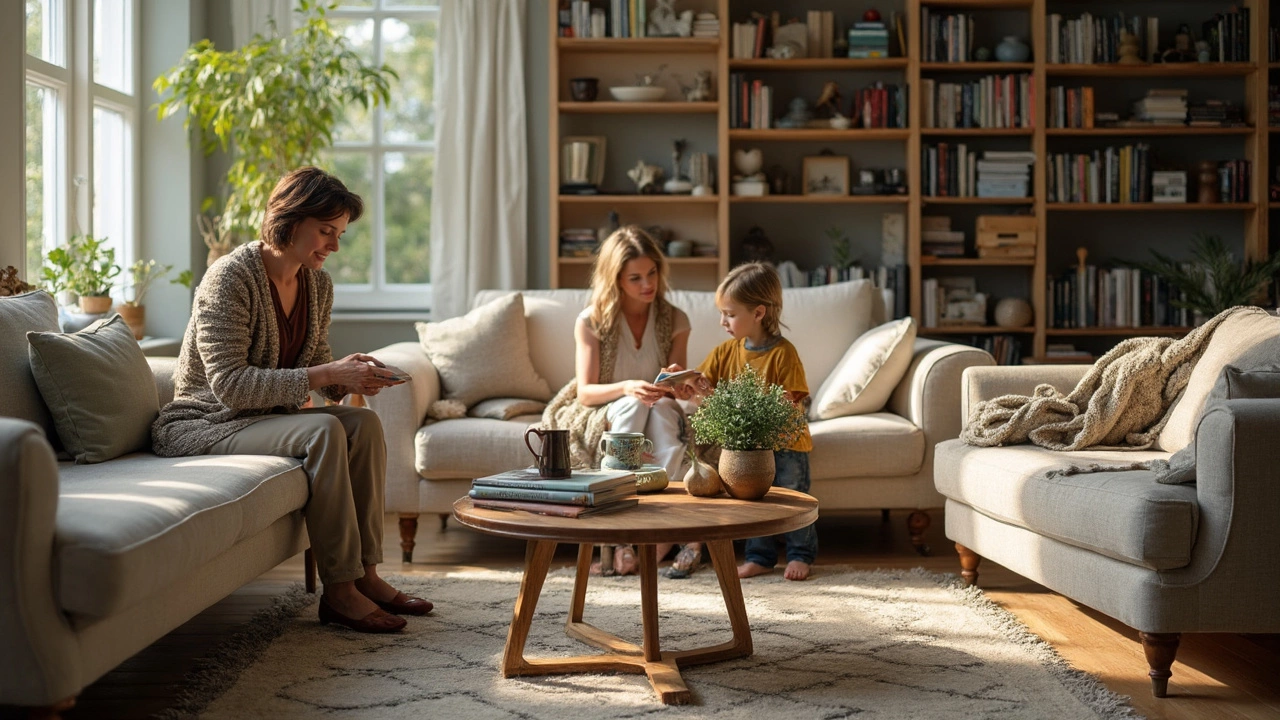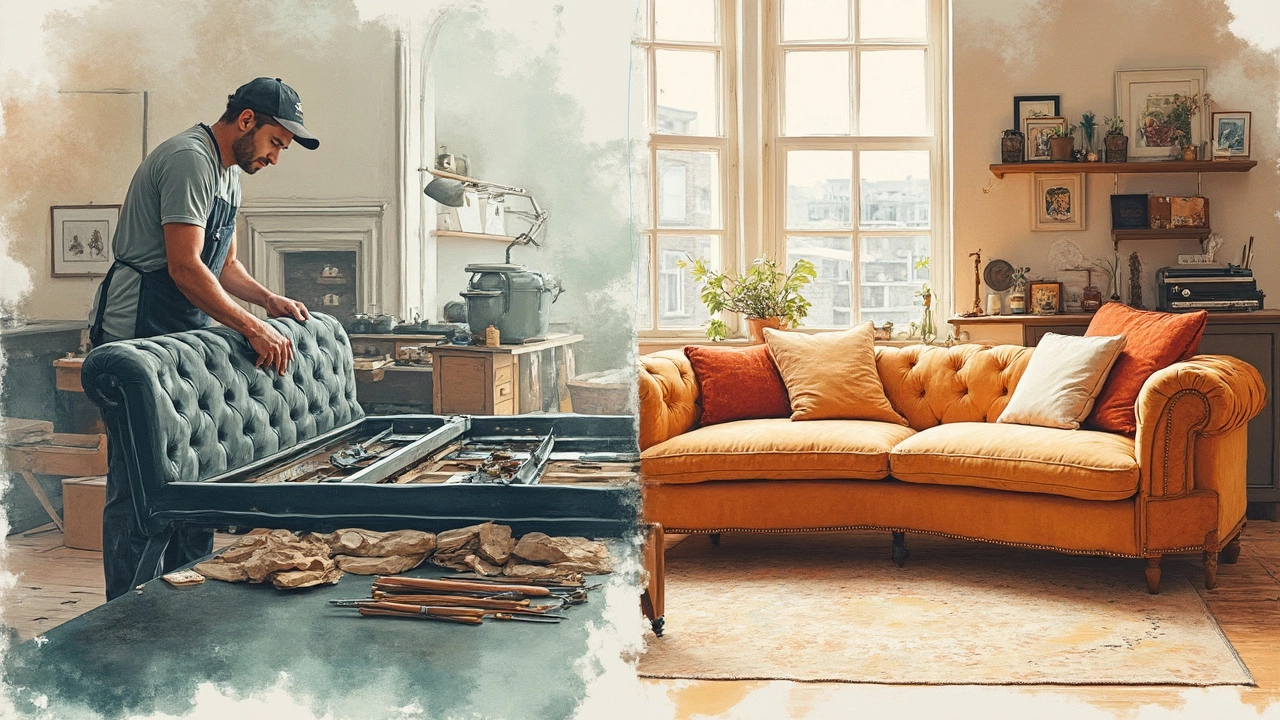
Walk into any furniture store and every sofa claims to be the best, but most people can tell the difference only after a year or two—when the cushions start to sag or the fabric pills. So, what separates a forgettable sofa from one that’ll last through movie nights, messes, and years of company?
Big brands throw fancy words like “hardwood frame” or “premium foam” around, but not all sofas live up to the hype. Real quality comes down to a few boring-sounding but crucial details, like what type of wood is inside or how the joints are put together. The trick is knowing what to look for, so you don’t get fooled by a pretty cover.
Ever heard someone say they paid top dollar and still regretted their sofa? It happens. Some of the best sofas aren’t the most expensive, and some budget options really do hold up. In the next sections, I’ll walk you through what makes a sofa “best quality,” name some brands that nail it, share pricing truths, and give you solid tips on picking your perfect match without the guesswork.
Most folks think a quality sofa is just about how nice it looks, but there’s a lot going on under the cushions that matters way more for comfort, support, and how long it’ll last. The best sofas are built to take a beating without falling apart.
First thing to check? The frame. A real best sofa has a frame made from kiln-dried hardwood like oak, maple, or ash—not particleboard or cheap pine. Kiln-drying removes moisture, so your frame won’t warp or crack over time. If you knock on it and it sounds solid (not hollow), you’re on the right track.
Second, ask about the joints. Junk sofas rely on staples and glue. High-quality ones use dowels, wooden corner blocks, or metal brackets, with joints that are screwed and glued. This combo keeps the sofa sturdy even if you flop down hard or kids jump all over it.
Cushion filling is another place brands try to sneak in cheap stuff. Cheap foam sags fast. Look for high-density foam (at least 1.8 lbs per cubic foot) or, if you like softer seats, a foam core wrapped in down or polyester fiber. Here’s how some common cushion fillings compare:
| Filling Type | Feel | Durability (Years) |
|---|---|---|
| High-density foam | Firm, supportive | 7-10 |
| Feather/down blend | Soft, plush | 5-8 |
| Low-density foam | Soft at first, flattens | 2-4 |
Don’t forget to ask about the suspension system. Good sofas use eight-way hand-tied springs—not just webbing or wire. This old-school method gives you better comfort and stops the sagging in the seat. It costs more but is worth it if you want a sofa set that lasts.
Finally, fabric choice plays a part in quality too. Natural fabrics like cotton and linen feel great but don’t always last against spills and pets. Performance fabrics or tightly-woven synthetics are often better for families or heavy use. Ask about the rub count (Martindale or Wyzenbeek test); over 15,000 means the fabric can take some serious living room action.
Get these basics right, and your best quality sofa won’t just look good—it’ll feel good and hold up for years, even in a house that feels more like a playground.
If you’re searching for the best sofas that actually survive years of spills, naps, and binge-watching, you’ll want to know about the brands with real staying power. Everyone’s heard of IKEA or Wayfair, but when it comes to genuine quality sofa brands, a handful always pop to the top—think Stickley, Joybird, Crate & Barrel, and La-Z-Boy. These brands aren’t just selling style; they pour real effort into how their sofas are built.
Here’s what sets them apart:
Wondering how these guys stack up? Here’s a quick look at their average price range and warranty perks:
| Brand | Average Price Range (USD) | Standard Frame Warranty |
|---|---|---|
| Stickley | $3,500 - $8,000 | Lifetime |
| Joybird | $1,400 - $3,000 | Lifetime |
| Crate & Barrel | $1,800 - $4,500 | 7 years |
| La-Z-Boy | $1,200 - $3,800 | Limited Lifetime |
Notice that “lifetime” doesn’t always mean your lifetime—it’s usually defined as about seven years of normal use. But those warranty lengths still beat the pants off discount sofa brands, which sometimes offer just a year or even less. If you want your next sofa to outlast your subscription to Disney+, stick with one of the proven winners above. And don’t just trust the store labels—always ask what’s inside the frame and how they test their materials. A good brand will have real answers, not just buzzwords.

If you’ve ever stared at two best sofas with totally different price tags and wondered what the deal is, you’re not alone. Sofa pricing is a mystery to most people. Some brands charge three times more for something that looks almost identical to its cheaper cousin. So where’s the extra cash going?
First off, a chunk of the price isn’t about the sofa sets themselves—it’s about branding, marketing, and shipping. Big brands spend tons advertising their quality sofa brands, and you’re paying for that buzz. Then there’s the store mark-up, which can double the price right off the bat.
Material is the biggie, though. Quality sofas use kiln-dried hardwood frames instead of cheap particle board. Expect higher prices if you see terms like “solid oak” or “ash frame”—they’re not just for show. Good cushions matter too. High-density foam (over 2.0 lbs/ft³) or down-wrapped cushions cost more but hold their shape way longer. Cheaper stuff uses low-grade foam, and you’ll start to see (and feel) dips way sooner.
Labor is another big cost. Sofas hand-built in Italy or the USA (like some versions from Stickley or Ethan Allen) cost more, but the craftsmanship is usually leagues ahead of mass-produced options from overseas.
Here’s a quick look at where your sofa dollars actually go:
| Cost Factor | % of Retail Price |
|---|---|
| Materials (wood, fabric, foam) | 40% |
| Labor & Assembly | 25% |
| Shipping & Storage | 10% |
| Marketing & Branding | 15% |
| Retail Mark-up | 10% |
One more thing: sales don’t always mean a real bargain. Some stores keep “sale” tags up year-round, starting with inflated prices just to look like you’re saving. Always compare across different shops and try to find out what’s inside your sofa—not just what’s on the label.
End of the day, if a deal seems too good, there’s probably a hidden shortcut—a weak frame, thin fabric, or flimsy springs. And just because something’s pricey, doesn’t guarantee it’s one of the best sofas. Pay attention to construction and materials, not just the brand name or ad hype.
Picking out a best sofa isn't just about what looks good in a showroom. Your comfort, your space, and your daily life all matter more than you think. Here’s how to avoid buyer’s remorse and land a genuinely quality sofa set:
Here’s a fun stat: A survey in 2023 found that 68% of customers who inspected sofas in person ended up changing their mind about what they wanted, just by sitting down and checking the build quality themselves.
| Component | Best Practice | What to Avoid |
|---|---|---|
| Frame | Kiln-dried hardwood | Pine, plywood, particle board |
| Joints | Glued and screwed | Stapled only |
| Suspension | Eight-way hand-tied | Cheap webbing |
| Cushions | High-resiliency foam/core blend | Low-density foam |
| Fabric | High rub count, polyester blends | Low rub count, all cotton |
Last tip: Always measure your doorways and living space before you buy. It sounds obvious, but thousands of people every year discover too late their new sofa sets just won’t fit. Bring those numbers with you, and don’t take chances on eyeballing it.
Write a comment